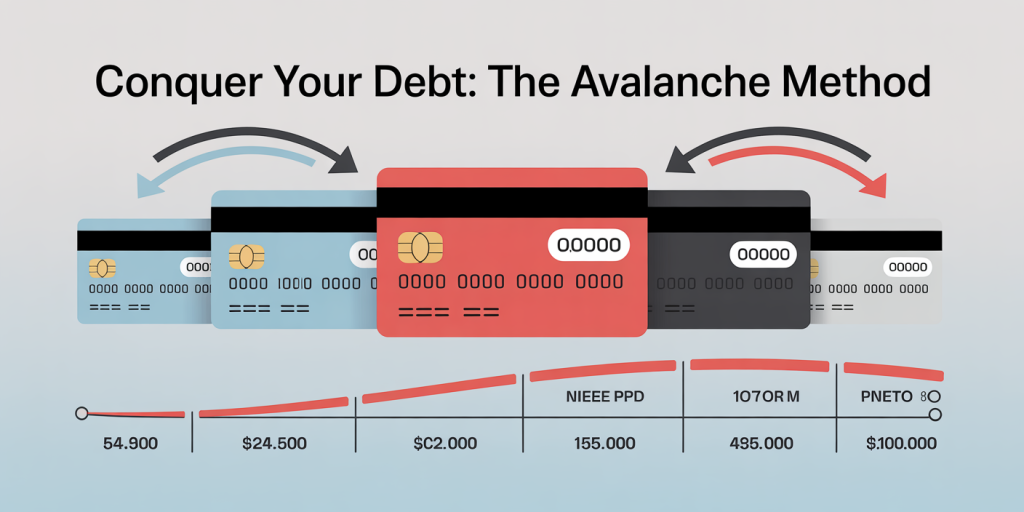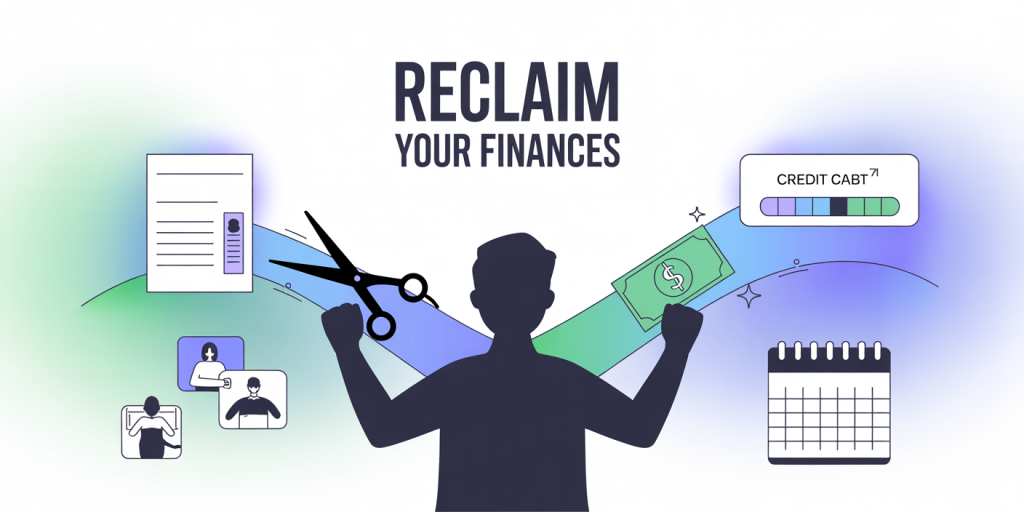Strategies to Pay Off Credit Card Debt Faster
Credit card debt remains one of the most pervasive financial challenges faced by millions worldwide. According to the Federal Reserve, as of early 2024, total outstanding credit card debt in the United States is approximately $930 billion, reflecting not only consumer spending habits but also economic trends and personal finance management skills. While credit cards offer convenience and purchasing power, the high-interest rates and revolving balances can quickly snowball, making debt repayment burdensome. This article explores effective strategies to accelerate credit card debt repayment, leveraging practical examples, data-driven insights, and comparative tools to guide consumers toward financial freedom.
Understanding the Impact of Credit Card Debt
Carrying credit card debt can lead to escalating financial stress, limiting an individual’s ability to save or invest. On average, credit cards impose interest rates ranging from 15% to 25% APR, significantly higher compared to other forms of consumer borrowing. The Consumer Financial Protection Bureau highlights that the average credit card debt among U.S. families was around $6,270 in 2023. When minimum payments are made each month, much of that goes towards interest rather than principal, prolonging the debt cycle.
For instance, consider a $5,000 credit card balance with an 18% APR, making minimum payments of 3% of the balance monthly. At this rate, it would take over 20 years to pay off the debt and cost more than $5,000 in interest alone, effectively doubling the original purchase amount. Such scenarios demonstrate the importance of adopting faster repayment strategies.
Prioritize Higher-Interest Balances with the Avalanche Method
One of the most effective ways to minimize total interest paid is to adopt the avalanche method for debt repayment. This technique involves listing all credit card debts and allocating extra funds to the card with the highest interest rate while maintaining minimum payments on others. Once the highest-rate card is paid off, the payments shift to the next highest, creating a “snowball” effect that speeds up repayment and saves money on interest.
For example, Jessica, a 30-year-old professional managing three credit cards with balances of $3,000 at 22% APR, $2,000 at 18% APR, and $1,500 at 15% APR, applies the avalanche method. By focusing an additional $400 monthly on the 22% APR card while paying minimums on the others, she saves over $1,200 in interest compared to making just minimum payments. The avalanche method requires discipline but offers optimal financial outcomes, making it highly recommended by financial advisors.

| Credit Card | Balance | Interest Rate | Minimum Payment | Extra Payment | Time to Pay Off (Months) | Interest Paid |
|---|---|---|---|---|---|---|
| Card A | $3,000 | 22% | $90 | $400 | 9 | $220 |
| Card B | $2,000 | 18% | $60 | $0 | 38 | $530 |
| Card C | $1,500 | 15% | $45 | $0 | 14 | $130 |
*Table: Impact of Avalanche Payment Strategy on Jessica’s Credit Cards*
Utilize Balance Transfers for Lower Interest Rates
Balance transfer credit cards can be a smart strategy to cut down interest costs and pay off debt faster. Many credit card issuers offer introductory 0% APR periods that typically last from 12 to 21 months. Transferring high-interest balances to these low-rate cards can drastically reduce interest accumulation, allowing more of your monthly payment to go toward principal reduction.

Take David, who carried a $10,000 credit card balance at 20% APR. By transferring this balance to a card offering 0% APR for 18 months with a 3% balance transfer fee, he effectively saved approximately $1,700 in interest during the promotional period. Using this method requires careful planning to pay off the balance before the promotional rate expires; otherwise, the remaining balances can incur high rates.
It’s essential to compare offers, focusing not only on the introductory APR but also on balance transfer fees and the regular APR after the promotional period. The following table compares two balance transfer cards available in 2024:
| Card Name | Intro APR Period | Intro APR Rate | Balance Transfer Fee | Regular APR After Promo | Other Features |
|---|---|---|---|---|---|
| Card A | 18 months | 0% | 3% | 19.99% | No annual fee, cashback |
| Card B | 21 months | 0% | 5% | 22.99% | Includes rewards program |
Budget Reallocation and Increased Income Streams
Effectively managing monthly cash flow is crucial for accelerating credit card repayments. Many individuals underestimate how small reallocations in their budget can free up substantial funds for debt reduction. For instance, cutting discretionary expenses such as dining out, subscriptions, or impulse purchases can add hundreds of dollars toward monthly payments.

Emily, a graduate student, reduced her spending by $300 per month by canceling unused subscriptions and preparing meals at home. She redirected these savings entirely towards her $7,000 credit card balance at 19% interest. By doing so, Emily shortened her repayment period by nearly three years and saved over $2,000 in interest payments compared to only making minimum payments.
In addition to expense trimming, increasing income sources, such as freelancing, part-time jobs, or selling unused items online, can boost debt repayment capacity. According to a recent survey by Bankrate, those who increased their monthly income by even 10% dedicated a significant proportion of the extra income to eliminating debt, leading to faster overall reductions in credit card balances.
Automated Payments to Avoid Late Fees and Penalties
Late payments on credit cards can trigger hefty penalties and increase the APR, putting a significant dent in debt repayment efforts. Setting up automated payments ensures that at least the minimum payment is made on time every month, helping maintain credit scores and avoid costly fees.
Michael, a small business owner, struggled to keep track of multiple credit card payments due to a hectic schedule. After automating payments through his banking app, he saw an immediate improvement. Automated payments prevented a $35 late fee charge and kept his APR steady at 16%, which was crucial to managing his $8,500 credit card balance effectively.
Moreover, automating payments with an option to pay above the minimum reduces the risk of overspending and supports consistent progress toward debt repayment goals. This strategy pairs effectively with other payment methods like the avalanche or snowball methods by ensuring financial discipline and timeliness.
Leveraging the Snowball Method for Psychological Momentum
While the avalanche method maximizes financial savings, the snowball method focuses on behavioral psychology—paying off the smallest balances first to build motivation. This approach is particularly useful for individuals who need frequent small wins to stay committed to their repayment plan.
Consider Sarah, who had five credit card debts ranging from $500 to $4,000. By paying off the $500 card first, she experienced a sense of accomplishment that fueled her commitment. This momentum accelerated her overall repayment schedule, despite the higher interest rate cards being paid off later.
The trade-off between the avalanche and snowball methods is interest cost versus psychological benefits, but both have proven success rates depending on the individual’s financial habits and mindset. Financial experts often recommend combining strategies tailored to personal preferences and financial situations for the best outcome.
Future Perspectives: Innovations and Policy Developments Affecting Credit Card Debt Repayment
Looking ahead, the landscape for credit card debt repayment is poised for changes fueled by technological advancement and regulatory reforms. Artificial Intelligence-driven budgeting apps are becoming more sophisticated in offering personalized debt repayment plans that optimize payments based on cash flow, interest rates, and spending habits.
Additionally, policymakers are examining measures to protect consumers from excessive credit card fees and usurious interest rates. In 2023, several states enacted laws capping interest rates for credit cards issued within their jurisdictions, aiming to offer relief to highly indebted consumers. Moreover, financial institutions are experimenting with features like targeted payment reminders and rewards for on-time payments to encourage responsible borrowing.
Financial literacy programs are gaining traction, promoting better understanding of credit mechanisms and debt management strategies from an early age. The integration of FinTech solutions with educational tools is expected to empower borrowers to tackle debt more effectively, reducing the national credit card debt burden over the next decade.
